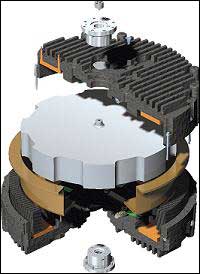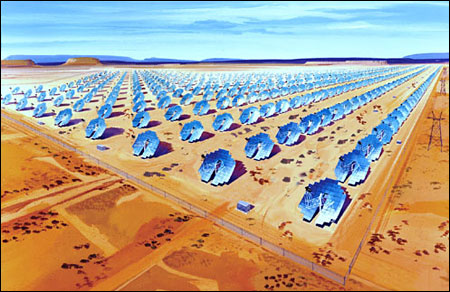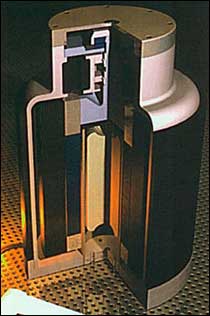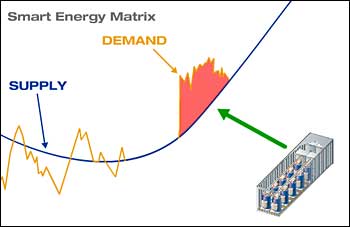A Summary of Flywheel Battery Technologies
updated December 20, 2007
Flywheel Batteries are a new and efficient means of storing energy using a mechanical method rather than a chemical one. They consist of a heavy metal disc floating and spinning on a cushion of magnetism in a vacuum housing as a means of storing and distributing energy.
Flywheel batteries work by their internal disc initially being set into motion by electrical energy inputted into the device. The disc then spins on its own and generates electricity for an extremely long period of time due to inertia and the absence of friction inside its housing. These systems have potential uses such as powering automobiles and other vehicles as well as storing energy from systems where the power supply and demand fluctuate, such as with solar installations and traditional energy power grids.
| |
| |

 |
Prototypes of flywheel batteries exist for use in passenger vehicles. However, safety concerns currently limit their usability because they spin at such high rates of speed that there is a danger of exploding and sending shrapnel flying outward from the device if there is a mechanical failure. For this reason the implementation of flywheels for passenger cars is still under development.
The following article explains the issue of the safety of Flywheels being used for this purpose:
"Researchers are developing ways to ensure that power-packed flywheel-battery systems stay safely contained."
"Packed with power that is available on demand, a practical flywheel battery would go a long way toward making low-pollution, high-mileage hybrid electric cars, trucks, and trains a reality. Few other near-term technologies can foreseeably provide the load-leveling (power-averaging) capabilities necessary for rapid acceleration, speed maintenance on grades, and recovery of braking energy (regenerative braking)."
http://www.testdevices.com/flywheel_article.htm
|
The current safety limitations of flywheels for use in passenger vehicles does not apply to other uses such as being implemented with utility power grids and alternative energy sources, where safety options are available such as the use of appropriately heavy duty housings and burying the flywheels underground.
| |
The following four minute Flash animation explains how flywheels can be used with utility power grids to balance the load of daily fluctuation of supply and demand, dramatically increasing the efficiency of power generators by allowing them to run at more constant output rates, and not needing to fluctuate their level of output according to demand. This animation is from the website of the company Beacon Power, which is starting to supply such flywheel systems to utility companies in California and New York State. The official website of the company is here. |
|
play animation in pop-up window
|

Another important use for flywheels is to store power from sources such as solar energy installations, for use when the sources are not able to generate energy such as during the night and when weather conditions block the sun. This use to balance out a varying source of energy is somewhat the opposite as the above use with a utility power grid, where they are used to vary output from a consistent source for varying demand.
The following article explains the use of flywheels with solar systems ..
https://itotd.com/articles/332/flywheel-batteries/
|













